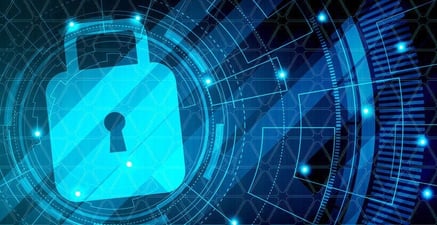Protecting Critical Infrastructure from Cyber Attacks
Critical infrastructure—such as energy grids, water systems, and transportation networks—forms the backbone of modern society. As these essential systems become increasingly digital, they also become prime targets for cyber threats. Cybersecurity for critical infrastructure is more critical than ever, as cyberattacks can lead to service disruptions, economic losses, and even national security threats. Implementing strong cybersecurity measures is essential to ensuring resilience against infrastructure cyber attacks.
The Rising Threat of Cyber Attacks on Critical Infrastructure
Hackers, cybercriminals, and even nation-state actors frequently target critical infrastructure due to its essential nature. Attacks such as ransomware, distributed denial-of-service (DDoS), and supply chain exploits can cripple operations, causing widespread consequences. A proactive cybersecurity strategy is necessary to defend against these evolving threats.
Did You Know?
Did you know that cyberattacks on critical infrastructure increased by 50% in the last two years, with energy and water utilities being the most targeted sectors?
Key Cybersecurity Strategies for Protecting Critical Infrastructure
1. Implementing Real-Time Threat Detection
Continuous monitoring of network traffic, operational technology (OT) systems, and industrial control systems (ICS) is essential to detect threats before they cause damage.
2. Strengthening Network Segmentation
Separating IT and OT networks minimizes the risk of cyber threats spreading across critical infrastructure systems.
3. Using AI-Powered Threat Intelligence
Artificial intelligence (AI) and machine learning (ML) enhance threat detection by analyzing patterns and identifying potential cyberattacks before they occur.
4. Enhancing Incident Response Readiness
Developing and testing incident response plans ensures that organizations can quickly mitigate cyber threats and recover from attacks with minimal disruption.
5. Securing Supply Chains
Many cyberattacks originate from third-party vendors. Ensuring that suppliers adhere to cybersecurity best practices reduces supply chain vulnerabilities.
Benefits of Strong Cybersecurity for Critical Infrastructure
1. Reduced Downtime
By preventing and mitigating attacks, organizations can ensure continuous service delivery without disruptions.
2. Regulatory Compliance
Following cybersecurity frameworks such as NIST and CMMC helps meet regulatory requirements while enhancing security.
3. Financial Protection
Preventing cyberattacks minimizes financial losses from downtime, ransom payments, and legal penalties.
4. Enhanced Public Trust
Secure infrastructure reassures customers, stakeholders, and government agencies that services remain reliable and resilient.
5. Improved National Security
Protecting infrastructure from cyber threats reduces the risk of large-scale disruptions and strengthens overall national security.
Steps to Strengthen Critical Infrastructure Security
Organizations can enhance cybersecurity by:
- Implementing Continuous Monitoring: Use real-time threat detection tools to identify and respond to potential cyber threats.
- Deploying Strong Access Controls: Restrict access to critical systems using multi-factor authentication and role-based permissions.
- Upgrading Legacy Systems: Replace outdated infrastructure with modern, secure technologies to reduce vulnerabilities.
- Conducting Regular Security Audits: Perform periodic assessments to identify and address potential weaknesses.
- Training Employees on Cybersecurity Best Practices: Educate staff on recognizing phishing attempts, social engineering attacks, and other cyber threats.
How BitLyft AIR® Protects Critical Infrastructure
BitLyft AIR® provides advanced cybersecurity solutions tailored for critical infrastructure protection. With AI-powered threat detection, real-time monitoring, and automated response capabilities, BitLyft AIR® ensures that essential services remain secure from cyber threats.
FAQs
Why is cybersecurity critical for infrastructure?
Cybersecurity protects essential services from cyberattacks, ensuring reliability, compliance, and national security.
What are the biggest threats to critical infrastructure?
Common threats include ransomware, phishing attacks, supply chain vulnerabilities, and nation-state cyber warfare.
How can AI improve infrastructure cybersecurity?
AI enhances threat detection by analyzing data patterns, identifying anomalies, and automating incident response.
What frameworks help secure critical infrastructure?
Regulatory frameworks such as NIST, CMMC, and NERC CIP provide security guidelines to protect critical infrastructure.
How does BitLyft AIR® help with infrastructure security?
BitLyft AIR® offers real-time monitoring, automated threat response, and AI-driven intelligence to safeguard critical infrastructure.





